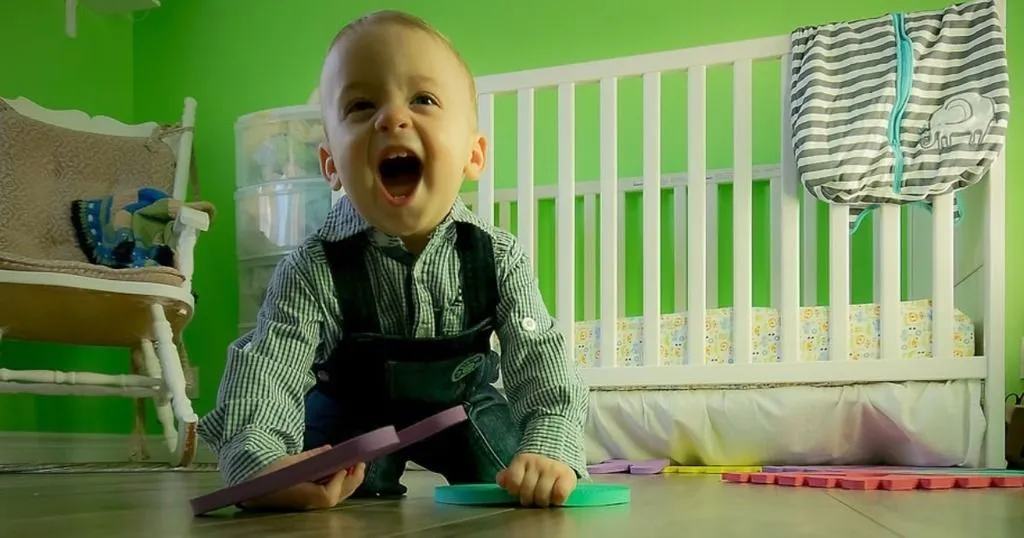Vocalizations as an early life behavioral marker for ASD
One of the prominent features of autism spectrum disorder (ASD) is impaired communication. However, most diagnoses of ASD happen after the child is more than 3 years old.
Posted by
Published on
Fri 30 Aug. 2013
Topics
| Autism | Parent-child Interaction | Parent-infant Dyads | The Observer XT | Video Observation |

One of the prominent features of autism spectrum disorder (ASD) is impaired communication. However, most diagnoses of ASD happen after the child is more than 3 years old, so there is not much information on the vocalizations of young children with ASD.
Vocalizations as an early life behavioral marker for ASD
For children under the age of 3, certain communication skills are not applicable – more information is needed on purely vocalizations (not conversation or language) in order to work on identifying another early life behavioral marker for ASD. In this study, Allison M. Plumb and Amy M. Wetherby chose to examine the vocalizations of ASD children at age 2 and the relationship of these vocalizations to other areas of development.
The goals of the study
Plumb and Wetherby wanted to examine the vocalizations of children aged 18 to 24 months in one group with those who were later diagnosed with ASD and two matched groups for children with developmental delays (DD) and typical development (TD).
First, they wanted to compare communicative and non-communicative vocalizations displayed by the children between the three groups.
Second, they wanted to examine the concurrent and predictive relationships between vocalization at age 2 and developmental measures at age 2 and 4 in ASD-diagnosed children.
Lastly, they wanted to determine if communicative vocalization at age 2 would predict the child’s nonverbal and verbal developmental level at age 3 more than non-communicative vocalizations would.
The background of the research
Much of the early research on young children with ASD has been done through home videos and parent reports, due to most children not being diagnosed with ASD before age 3. However, only so much can be done with the use of past videos. Plumb and Wetherby chose to use direct observation and systematic sampling procedures in their research.
Although many of the children chosen for the direct observation studies have not been diagnosed with ASD yet, they are “high-risk” (HR) and have an older sibling with ASD. Another important part of using direct observation was the ability to be able to notice when vocalizations were being used as a means to try to communicate and also to look at the relationship between vocalizations and later spoken language.
Data can be collected directly from observing the child at different ages – the researchers do not have to rely on sources which may not be reliable, like home videos.
Also, researchers have looked to see if there is a difference between the way ASD children vocalize and the way TD children vocalize. Schoen, Paul, and Chawarska (2011) studied the vocal transcriptions of children age 18 to 36 months, and compared two groups (chronological age or CA and language age or LA) of TD toddlers to a group of ASD children. It was found that though the speech sound use was the same between the ASD and LA-matched groups, the ASD group used significantly more atypical vocalizations that either of the two TD groups.
Systematic observational research
Another useful part of this study was systematic observational research, which is emerging for children younger than 2 years old with ASD. Many of these identified children come from a general population screen that uses the Communication and Symbolic Behavior Scales Developmental Profile or the CSBS DP (Wetherby & Prizant 2002). Also, Wetherby and colleagues (2004) investigated a subset of this group of CSBS DP children, using the Systematic Observation of Red Flags (SORF) for ASD in Young Children (Wetherby & Woods, 2002). In this study, a lack of communicative vocalizations was discovered to be one of 13 red flags differentiating children with ASD from children with TD.
The methodology
The 125 participants were sorted into three groups (ASD, DD without ASD, and TD). Researchers used The Observer XT to recode video-recorded CSBS DP Behavior Samples that held vocalization measures and code communicative acts. All of the speech and non-speech vocalizations were coded and segmented based on the silence surrounding the vocalization or a change in category. The three categories were transcribable vocalization, non-transcribable vocalization, and could not be determined.
To learn more about this experiment and read the results, you can find the publication here:
- Plumb, A.M.; Wetherby, A.M. (2013). Vocalization development in toddlers with autism spectrum disorder. Journal of Speech, Language, and Hearing Research, 56, 721-734.
- Schoen, E.; Paul, R.; Chawarska, K. (2011). Phonology and vocal behavior in toddlers with autism spectrum disorders. Autism Research, 4, 1-12.
- Wetherby, A.M.; Prizant, B.M. (2002). Communication and Symbolic Behavior Scales Developmental Profile (1st normed ed.). Baltimore, MD: Brookes.
- Wetherby, A.M.; Woods, J. (2002). Systematic observation of red flags for autism spectrum disorders in young children (Unpublished manual). Florida State University, Tallahassee.
- Wetherby, A.M.; Woods, J.; Allen, L.; Cleary, J.; Dickinson; Lord, C. (2004). Early indicators of autism spectrum disorders in the second year of life. Journal of Autism and Developmental Disorders, 34, 473-493.
Related Posts

What does an infant’s gaze tell us about how hungry they feel?

Working memory and emotion regulation in children with ADHD


